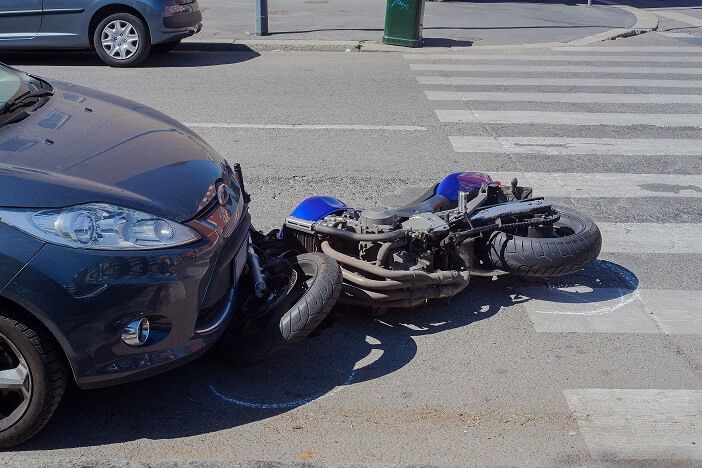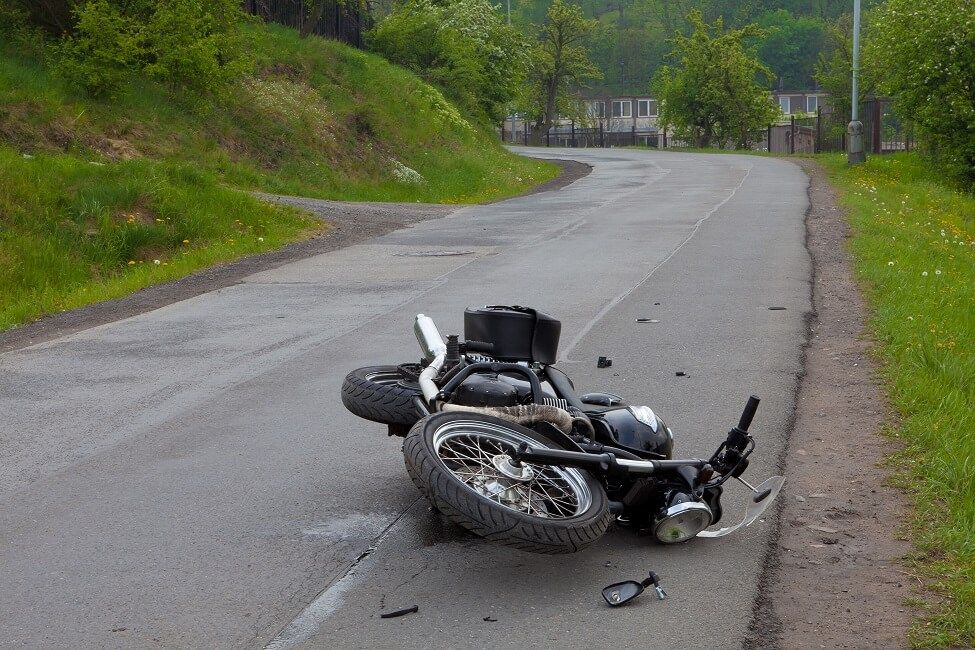THE REAL ISSUES RIDERS FACE AFTER A MOTORCYCLE ACCIDENT
Being in any vehicle collision is frightening, but for a rider, a motorcycle accident is a uniquely traumatic event. With little protection between you and the road, the physical, emotional, and financial challenges you face can be overwhelming. The moments immediately following the motorcycle crash are critical. Knowing what to do can protect your health and form the foundation of a successful legal claim. This guide outlines the immediate steps to take at the scene and the long-term issues you will face during your recovery.

IMMEDIATE STEPS AT THE SCENE OF THE MOTORCYCLE CRASH
In the chaotic moments after an impact, your actions are crucial. Stay as calm as possible and follow these steps.
Step 1: Prioritize Safety and Call 911
Your first priority is safety. If you are able, move to the side of the road to avoid further danger. Then, call 911 immediately. Even if you feel "fine," you may be in shock. Adrenaline can mask serious injuries. A police report and official medical evaluation are essential pieces of evidence. If you cannot make the call yourself, ask a bystander to do it for you.
Step 2: Conduct an Injury and Gear Check
Before making any sudden movements, perform a self-assessment. Protective gear is often the only thing preventing catastrophic injury in the face of a motorcycle accident.
Helmets, Jackets, Pants, Gloves, and Boots: Note where your gear is scuffed, torn, or cracked. This indicates the points of major impact on your body.
Personal Injury Check: Without moving excessively, mentally scan your body for pain, numbness, or tingling. Do not attempt to stand up or remove your helmet unless absolutely necessary, as you could worsen a neck or spinal injury.
Step 3: Document Everything at the Accident Scene
Thorough documentation is your most powerful tool. The evidence you gather now will be vital if you need to prove liability later.
Photographic Evidence: Use your phone to take pictures and videos from every possible angle. Capture the final positions of all vehicles, skid marks, road conditions, traffic signals, and damage to your bike and the other vehicle. Use the panoramic function for a 360-degree view of the scene.
Written or Recorded Notes: Your memory of the face incident motorcycle crash can fade or change over time. As soon as you are able, write down or record a voice memo detailing everything you remember—what happened right before, during, and after the collision.
Step 4: Collect Critical Information
While the police will create a report, gathering your own information ensures you have everything you need.
Other Drivers: Get their full name, address, phone number, driver's license number, and insurance policy information.
Vehicles: Note the make, model, color, and license plate number of all vehicles involved.
Witnesses: Get the names and contact information of anyone who saw the accident. Independent testimony can be invaluable.
Police Officer: Ask for the responding officer's name, badge number, and the official police report number.

THE LONG-TERM CHALLENGES RIDERS FACE
The face of a motorcycle accident extends far beyond the crash scene. The following weeks and months will present a new set of challenges that can be difficult to navigate alone.
Navigating Medical Treatment and Recovery
Motorcycle accident injuries are often severe, including road rash, broken bones, traumatic brain injuries (TBIs), and spinal cord damage. Your recovery may require surgeries, physical therapy, and long-term care. The associated medical bills can quickly become astronomical, creating immense financial stress while you are trying to heal.
Dealing With Insurance Companies
Soon after the accident, you will be contacted by insurance adjusters. Remember, their goal is to minimize the payout for their company. They may try to get you to admit partial fault, offer a quick and low settlement, or downplay the severity of your injuries. Never give a recorded statement or accept an offer without consulting an attorney.
Proving Liability and Fighting Bias
One of the biggest issues riders face is the unfair bias against them. Insurance companies and juries often assume the motorcyclist was driving recklessly. Proving that the other driver was at fault requires skillful investigation and a clear presentation of the evidence you gathered at the scene. This is where an experienced motorcycle accident lawyer becomes your greatest asset.
Don't Face the Aftermath of a Motorcycle Accident Alone
From the moment of impact to the final settlement, the challenges a rider must face are significant. Trying to manage medical appointments, insurance negotiations, and legal deadlines while recovering from your injuries is nearly impossible.
At Steelhorse Law, we understand the unique difficulties of a face accident motorcycle case. We fight the bias against riders and work tirelessly to ensure you receive the maximum compensation you deserve. Contact us today for a free consultation to discuss your case.
